Starchitect Kengo Kuma's Inspired Designs, Including the Portland Japanes Garden
Architecture critic Randy Gragg takes us on a tour through Kengo Kuma's designs for the Japanese Garden and the Tokyo Olympic Stadium, as well as several highlights from Kuma's portfolio.

1 of 17
Cultural Crossing, Portland Japanese Garden, Portland, Oregon (2017) The design for Kengo Kuma's first public building in the U.S. will integrate with the steep, hillside terrain, maximizing views to the city and the garden. The pitched green roofs, Kuma says, are a new concept for Japanese pavilions.
Courtesy of Kengo Kuma and Associates
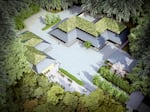
2 of 17
Cultural Crossing, Portland Japanese Garden, Portland, Oregon (2017) The Cultural Crossing village will deploy a gunkol plan, which translates into “the flying geese” — the V formations of migrating birds.
Courtesy of Kengo Kuma and Associates

3 of 17
Cultural Crossing, Portland Japanese Garden (2017) The Cultural Crossing buildings will use Port Orford and other local cedars. The smell is a central part of Japanese garden design, says Kuma.
Courtesy of Kengo Kuma and Associates

4 of 17
Cultural Crossing, Portland Japanese Garden (2017) "Between the two buildings, the people can feel a kind of intimate village starts from here," says Kuma. "Basically the idea for those new buildings is creating one village, not a big building. We divide the building into small pieces; we try to create the human scale in this village."
Courtesy of Kengo Kuma and Associates

5 of 17
Cultural Crossing, Portland Japanese Garden (2017) The $33.5 million expansion of the Portland Japanese Garden is being speared by Kengo Kuma.
Courtesy of Kengo Kuma and Associates
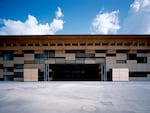
6 of 17
Yusuhara Town Hall, Usuhara, Takaoka, Kochi Japan (2006)For a town dependent upon forestry, Kengo Kuma designed what he describes as “an interiorized town square” to house an agricultural cooperative.
Courtesy of Kengo Kuma and Associates
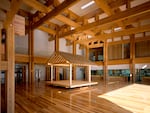
7 of 17
Yusuhara Town Hall, Usuhara, Takaoka, Kochi Japan (2006)The hall features a stage for the local performance tradition of kagura.
Courtesy of Kengo Kuma and Associates.

8 of 17
Nakagawa-Machi Bato Hiroshige Museum, Nasu, Tochigi, Japan (2007) Using a primary vocabulary of louvers — also known as slats — made of locally grown cedar, Kengo Kuma designed a museum for the great ukihoe artist Ando Hiroshige.
Courtesy of Kengo Kuma and Associates
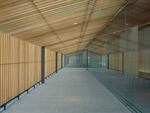
9 of 17
Nakagawa-Machi Bato Hiroshige Museum, Nasu, Tochigi, Japan (2007)

10 of 17
Nakagawa-Machi Bato Hiroshige Museum, Nasu, Tochigi, Japan (2007) Hiroshige's portrayal of rain as a layer over the primary subject of his paintings inspired Kuma’s overlapping filters of light.
Courtesy of Kengo Kuma and Associates

11 of 17
Chokkura Plaza, Takanezawa, Shioya, Tochigi, JapanUsing stone from a nearby quarry, Kengo Kuma added a screen to an old stone storehouse to create a community space in front of Takanezawa’s railway station.
Courtesy of Kengo Kuma and Associates
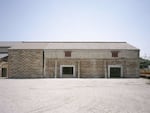
12 of 17
Chokkura Plaza, Takanezawa, Shioya, Tochigi, Japan The stone, Oya, is porous rock used by Frank Lloyd Wright for the Imperial Hotel.
Courtesy of Kengo Kuma and Associates
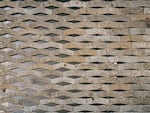
13 of 17
Chokkura Plaza, Takanezawa, Shioya, Tochigi, Japan Wright prized the stone's “softness,” which Kuma wanted to take “a step further” by leaving the gaps one might fine in the type screen made from lighter materials.
Courtesy of Kengo Kuma and Associates

14 of 17
Saint-Denis Paris, France Dramatically scaling up their work, Kengo Kuma & Associates won the first prize for the competition “Saint-Denis Pleyel Emblematic Train Station” in Saint-Denis, France.
Courtesy of Kengo Kuma and Associates

15 of 17
Saint-Denis Paris, France The train station will be the first stone of a future global urban project in the site of Saint-Denis Pleyel. It will enable the site and the city to increase its metropolitan scale significantly.
Courtesy of Kengo Kuma and Associates

16 of 17
Olympic Stadium (2019) After cost overruns drove the Japanese government to ditch a $1.5 billion stadium designed by Zaha Hadid for the 2020 Olympics, Kengo Kuma won a competition with a more modest design partially of wood.
Courtesy of Kengo Kuma and Associates
![Olympic Stadium (2019)
Kuma described the stadium as “not an outstanding building but a structure [that] integrates with the nearby forest” and points out that is in keeping with “the concept of Japanese-ness.”
The Center for Architecture, 403 NW 11th Ave, will display "Tsunagu: Connecting to the Architecture of Kengo Kuma," a retrospective of the architect's career, through Feb. 29.](https://opb-opb-prod.cdn.arcpublishing.com/resizer/v2/V2XG34I4MBEUVG5O5BAD7GBLSM.png?auth=bcef3f3c4756312190d8cf59c060e85dbea7e9b57a91199ce992f93de391422e&width=150)
17 of 17
Olympic Stadium (2019) Kuma described the stadium as “not an outstanding building but a structure [that] integrates with the nearby forest” and points out that is in keeping with “the concept of Japanese-ness.” The Center for Architecture, 403 NW 11th Ave, will display "Tsunagu: Connecting to the Architecture of Kengo Kuma," a retrospective of the architect's career, through Feb. 29.
Courtesy of Kengo Kuma and Associates